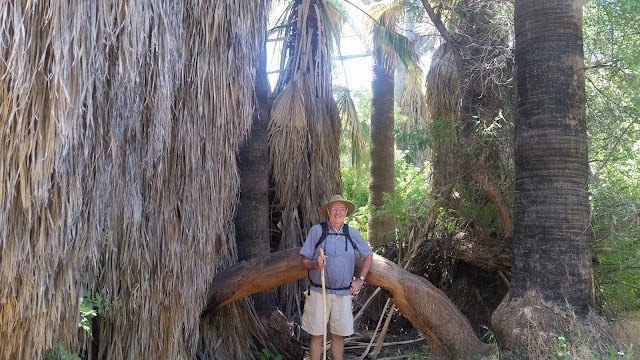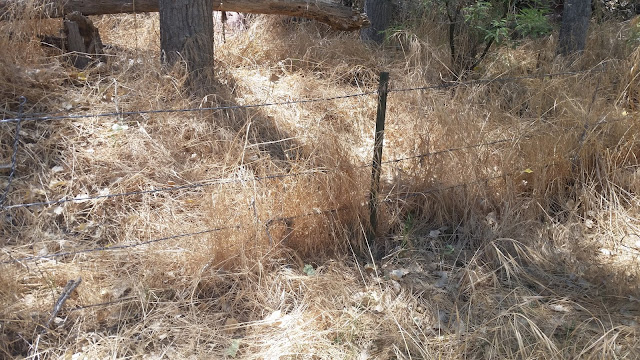On Saturday, my left foot was bothering me, so we did not go hiking again. Instead, we visited the Lincoln State Monument. Lincoln has become a historical district and there are 8 or 9 museums plus several other buildings that have been (or are being) restored. We started with visiting the largest museum and watched a video about Lincoln's history, including the Lincoln County War and Billy the Kid. One of the interesting items in that museum was an old stage coach.
We then walked through several other buildings and museums that were open, including Dr. Woods' house - although the building dates from the 1860s, Dr. Woods and his wife lived here in the 1900s.
This area became the New Mexico territory after the Mexican American War of 1846 - 1848. Prior to that, it had been the home of the Mescalero Apache and the Hohokams to the 1500s, then Spanish territory until the War of Mexican Independence in 1819, then Mexican territory until 1848. That means there were a lot of Spanish/Mexican people living here, as well as Anglos who came later. The town was called Placita del Rio Bonito before becoming Lincoln (named after our President Lincoln).
We then had lunch in the Lincoln Park before visiting the last museum, one of the stores.
Then we drove to Capitan and along the way stopped at a road side memorial to the Capitan fire of 1950.
The Smokey Bear Historical Park is nicely landscaped with xeriscape gardens in front.
Inside, we watched a movie about how Smokey the Bear was created during WWII to protect our forests because they were seen as a critical war material resource. At that time, wood was still used in constructing air planes. After the Capitan fire of 1950, a small bear cub was found injured and stuck in a tree - he was rescued and brought back to health and then moved to the National Zoo in Washington DC for the rest of his 26 years of life. When he died in 1976, he was brought back to Capitan and buried in the park.
Then we headed back to our rental house (the Nutt House) in Ruidoso for a quiet evening with lasagna, salad and wine for dinner. Monday, we took it easy and watched a couple of movies. And Tuesday, we made the trip back by the southerly route - easily done in about nine hours. Among other things, we passed both White Sands National Monument and White Sands Missile Range - apparently, signs indicated that the road is closed at times, we think because of possible missile tests by the US Army which controls the range. We also passed the spot where the first nuclear bomb test was held - it is only twice per year for visits.
We then walked through several other buildings and museums that were open, including Dr. Woods' house - although the building dates from the 1860s, Dr. Woods and his wife lived here in the 1900s.
This area became the New Mexico territory after the Mexican American War of 1846 - 1848. Prior to that, it had been the home of the Mescalero Apache and the Hohokams to the 1500s, then Spanish territory until the War of Mexican Independence in 1819, then Mexican territory until 1848. That means there were a lot of Spanish/Mexican people living here, as well as Anglos who came later. The town was called Placita del Rio Bonito before becoming Lincoln (named after our President Lincoln).
We then had lunch in the Lincoln Park before visiting the last museum, one of the stores.
Then we drove to Capitan and along the way stopped at a road side memorial to the Capitan fire of 1950.
The Smokey Bear Historical Park is nicely landscaped with xeriscape gardens in front.
Inside, we watched a movie about how Smokey the Bear was created during WWII to protect our forests because they were seen as a critical war material resource. At that time, wood was still used in constructing air planes. After the Capitan fire of 1950, a small bear cub was found injured and stuck in a tree - he was rescued and brought back to health and then moved to the National Zoo in Washington DC for the rest of his 26 years of life. When he died in 1976, he was brought back to Capitan and buried in the park.
Then we headed back to our rental house (the Nutt House) in Ruidoso for a quiet evening with lasagna, salad and wine for dinner. Monday, we took it easy and watched a couple of movies. And Tuesday, we made the trip back by the southerly route - easily done in about nine hours. Among other things, we passed both White Sands National Monument and White Sands Missile Range - apparently, signs indicated that the road is closed at times, we think because of possible missile tests by the US Army which controls the range. We also passed the spot where the first nuclear bomb test was held - it is only twice per year for visits.

































































